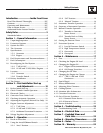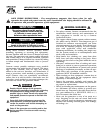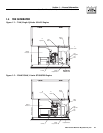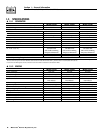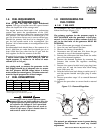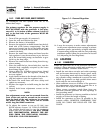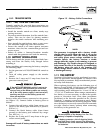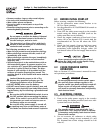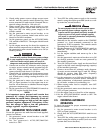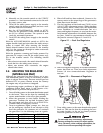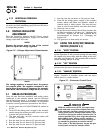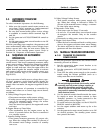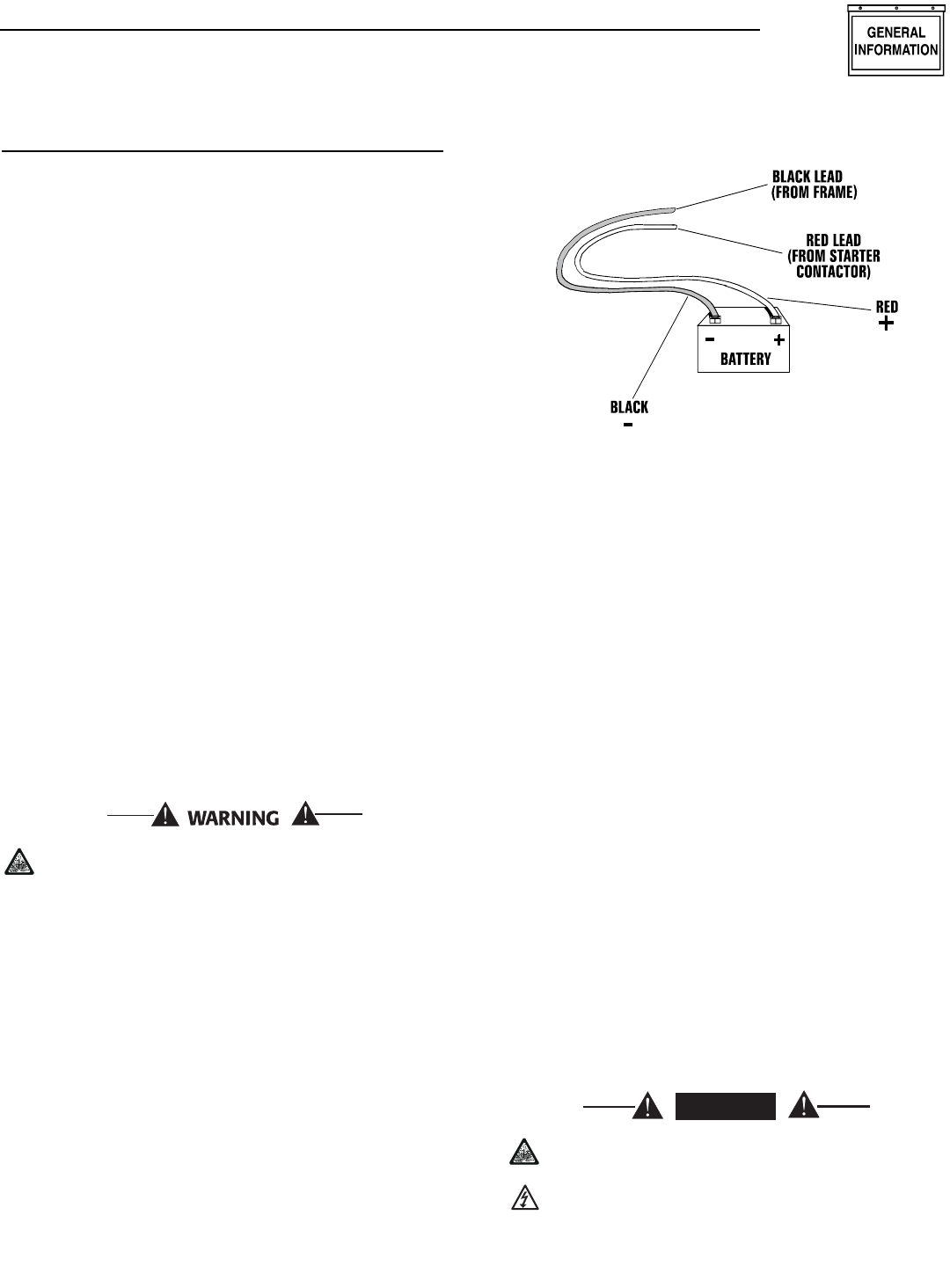
1.9.2 TRANSFER SWITCH
1.9.2.1 7 kW, 12 kW and 15 kW Units
Transfer switches for use with these generators are
sold separately and can be purchased from Generac
Authorized Dealers.
• Install the transfer switch on a firm, sturdy sup-
porting structure.
• To prevent switch distortion, level the switch if nec-
essary. This can be done by placing washers
between the switch enclosure and mounting sur-
face.
• Never install the switch where water or any corro-
sive substance might drip onto the enclosure.
• Protect the switch at all times against excessive
moisture, dust, dirt, lint, construction grit and cor-
rosive vapors.
• Failure to utilize a Generac/Guardian transfer
switch with this generator will void the warranty.
1.10 BATTERY INSTALLATION
Fill the battery with the proper electrolyte fluid if nec-
essary and have the battery fully charged before
installing it.
Before installing and connecting the battery, complete
the following steps:
1. Set the generator's AUTO/OFF/MANUAL switch to
OFF.
2. Turn off utility power supply to the transfer
switch.
3. Remove the 5 amp and 15 amp fuses from the
generator control panel.
If the AUTO/OFF/MANUAL switch is not set to
its OFF position, the generator can crank and
start as soon as the battery cables are connect-
ed. If the utility power supply is not turned off,
sparking can occur at the battery posts and
cause an explosion.
Battery cables were factory connected at the genera-
tor (Figure 1.5). Connect cables to battery posts as
follows:
4. Connect the red battery cable (from starter con-
tactor) to the battery post indicated by a positive,
POS or (+).
5. Connect the black battery cable (from frame
ground) to the battery post indicated by a nega-
tive, NEG or (—).
6. Replace the 5 amp and 15 amp fuses in the gen-
erator control panel.
NOTE:
Damage will result if battery connections are made
in reverse.
Figure 1.5 – Battery Cable Connections
NOTE:
The generator is equipped with a battery trickle
charger that is active when the unit is set up for
automatic operation. With the battery installed
and utility power source voltage available to the
transfer switch, the battery receives a trickle
charge while the engine is not running, to prevent
self-discharge. The trickle charger is designed to
help extend the life of the battery by maintaining
the battery when the unit is not running. The
trickle charge feature cannot be used to recharge
a discharged battery.
1.11 THE BATTERY
Servicing of the battery is to be performed or super-
vised by personnel knowledgeable of batteries and
the required precautions. Keep unauthorized person-
nel away from batteries.
When replacing the battery, use the following type of
battery: Group 26/26R 12-volt battery with a rating of
350 cold-cranking amps minimum for 7 kW; 525
cold-cranking amps minimum for 12 and 15 kW at
-17.8º C (0º F) minimum. When using a maintenance-
free battery, it is not necessary to check the specific
gravity or electrolyte level. Have these procedures
performed at the intervals specified in the “Service
Schedule.” A negative ground system is used. Battery
connections are shown on the wiring diagrams. Make
sure the battery is correctly connected and terminals
are tight. Observe battery polarity when connecting
the battery to the generator set.
Do not dispose of the battery in a fire. The
battery is capable of exploding.
A battery presents a risk of electrical shock
and high short circuit current. The following
precautions are to be observed when working
on batteries:
DANGER
◆
Section 1 — General Information
Guardian Air-cooled 7 kW, 12 kW and 15 kW Generators
Generac® Power Systems, Inc. 9



